In the summer season, the frequent guest at the dinner table is tomato. This Parenic Family Vegetable has excellent taste and contains many useful substances, in connection with this, it is so popular in the dishes of many countries of the world. In today's article, we will talk about tomato varieties, their basic properties and appointment.
A little from the history of tomatoes
The ancestors of the current alignment tomatoes are wild grades growing in hot tropical areas of South America. From the native continent, this vegetable was brought to Europe in 1493, where the Spaniards and Italians were engaged in its breeding. In the kitchens of these peoples, Tomat to this day occupies a leading place. The word "tomato" itself occurred from the Italian analogue, in the literal translation of the Golden Apple, since the first fruits migrating to Europe had a crust of golden orange.
Planting tomatoes in Russia began to engage in the XVIII century, when the Queen of Catherine II was in the throne. Thanks to the well-known breeder E. Grachev, as well as agricultural A. Bolotov, the cultivation of tomatoes came to the Crimea, the Rostov and Saratov province, to the North Caucasus, and next covered by all other areas of the country.
Useful properties of vegetable
Thanks to the rich crops of fruits and their wonderful taste, the cultivation of tomatoes remains so popular in our days. In addition to gastronomic advantages, this vegetable also has a number of useful qualities:
- normalizes the acidity of the gastrointestinal tract;
- reduces the risk of developing oncological diseases;
- has an antioxidant effect on the body;
- promotes to actively update cells.
The tomatoes contain the following substances:
- a number of vitamins: A, B, in 6, V 9, V 2, K, s, pp, e;
- beta carotene;
- fructose and glucose;
- lemon, apple and wine-acid;
- salts of potassium, magnesium, sodium, iodine, phosphorus, iron, zinc and some others;
- antioxidant - carotenoid lycopene.
The main physical characteristics of tomatoes
Before deciding which tomato varieties fall on their garden, for beginnings, think about how much you will use the resulting harvest: cut into a salad, preserve the whole whole, to make juice, lecture or refueling. All varieties of this vegetable can be divided into conditional categories in such characteristics:
- taste;
- the size;
- juiciness;
- hardness;
- skin thickness;
- storage ability.
Based on this data, tomatoes can be described as follows:
- Large fruits are most often used for salads, so the most important qualities are taste.
- When buying tomato seeds, giving a fine-grazing harvest, remember that the best of all these varieties are suitable for canning as a whole. These indicators as hardness and dryness are also important for them, thanks to which they retain a beautiful view of the bank.
- Hard vegetables with coarse skin have the ability to be kept for a long time - this feature is important if you are engaged in transportation and selling tomatoes.
- The more juicy and softer you choose the variety, the better it is to use it for extriving juice, processing on ledge, ketchup, filling for borscht. Some species are considered particularly successful for these purposes, they include: "Black Prince", "Brown Sugar", "Black Pear", "Paul Robson", "Mongolian Dwarf".
Tomato varieties with description
Below I would like to list some of the varieties of tomatoes, allocating their main distinctive features and optimal use methods:
- "Budenovka". This vegetable reaches a height of about 70 cm and gives a ripe crop for 110-115 days from the moment of seedlings. If you want to get the fruits as large as possible, you can not do without steaming. Budenovka has a pleasant taste, medium juice and thin skin. It is not adapted to long storage. This variety is most often used in salads, and also used for the production of tomato paste, leaps or closed entirely.
- "Bull Heart." Refers to medieval species, caused by 110-115 days after the appearance of the first sprouts. The height of the bush directly depends on environmental conditions. So, in the greenhouse, the plant size can reach 1.5 m, whereas in the open soil - only 1 m. The stem has an average thickness and forms many processes, from most of which should be getting rid of, leaving 2-3 stepsing. This variety is unstable to bacterial diseases, fungal lesions, as well as drier spot. To prevent the above-mentioned diseases, it is necessary to process bushes with various drugs, for example, phytoosporin. The fruits of the "bull heart" are characterized by soft, good juiciness, thin skin and pleasant sweet taste. From this variety, salads, tomato juices, ledge, refueling are mainly prepared.
- "Lady finger." The growing conditions for this species, as in the previous case, affect the size of the bush. In a greenhouse, the tomato reaches a height of up to 120 cm, in an open place - about 60 cm. Measking and garters in the process of plant care is not required. The fruit shape is elongated, weight - no more than 70, the surface is slightly ribbed. Because of the rude skin, "Ladies' fingers" are perfectly stored and used for conservation in solid form.
- "Pear". This variety is presented in three versions: black, yellow and red. The last two species belong to tall plants. A red pear has tight dry fruits with thin skin, capable of stored for a long time. The yellow variety is slightly softer, contains a small amount of juice, in the torn form begins to deter quick quickly. The black grade of this tomato, in contrast to the first two, has lower bushes and matures a little later than their analogues. The stem and the root system of black pear are quite powerful, the bush is practically not subjected to such diseases as phytoofluoride and colaporiosa. The processes forms late and in small quantities, almost does not need a garter. This early tomato grade 55-65 days after germination begins to give small fruits, weighing from 55 to 95. They have excellent taste, good juice and fine skin. Used for marination in solid form along with yellow and red tomatoes.
- Danko. A red-bearing plant, reaching a height of 55 cm. Tomatoes of this variety have a heart shape, they are quite large, their weight ranges from 150-300 g. This type of tomato is needed steaming, but it grows perfectly and fruits in conditions of low humidity. Fruits are distinguished by pleasant taste, suitable for both salads and processing into juices, pasta, ketchup.
- "Gardener". This tall variety can reach 160 cm in height. It matures on 120 days after the appearance of the first germs and has a good yield - up to 9 kg from one plant. The fruits of the "gardery" of the round shape, large and heavy, are located on a bush in the form of a cluster of 5-6 tomatoes. This type of tomatoes are little susceptible to diseases, and also has excellent taste.
- "Irma". This tomato grade ripens about 100 days after the landing and does not need meating. The height of the bush is small - up to 60 cm, the fruits of medium and large size. These tomatoes have a solid flesh, a small juiciness, strong skin. A long time is stored for a long time, it is great for whole-fuel canning, marination in its own juice, preparation of autumn salads.
- "Miracle of Light." This type of tomato was named so because of its unusual appearance: yellow fruits, on the form of a lemon resembling. The "miracle of the world" refers to tall plants and reaches 3 m in height. It is distinguished by rich crops, on the lower branches of the bush can ripen up to 30-40 small tomatoes weighing up to 80 g. From one plant you can get 12 kg of fruits. The taste of this tomato is good, slightly sweet. Tomatoes are excellent for all-air canning. In the fresh form, this variety is useful to those who suffer from the increased acidity of the stomach.
- "Cardinal". This plant wants to allocate among other varieties of tomatoes for open soil, because it will carry the time drops without any problems. "Cardinal" is characterized by large fruits weighing from 150do 300 g. The pulp of tomatoes has an average juice and a small amount of seeds. The fruits are strong with delicate skin, possess excellent taste, but are stored for a short time. Most often, this variety is used in salads. For whole-fuel canning, it does not fit, but it turns out a good paste, ledge, mashed potatoes.
- "Raspberry giant." This popular variety of tomatoes is recognized as one of the best tomato varieties. The giant bush reaches 1 m in height, the plant needs moderate stepback and mandatory garter. Mature fruits appear on 105-110 days after landing, reaching weights from 200 to 600 g. The pulp of this variety is very gentle, soft and juicy, thin, the taste of tomato is beautiful. This species is stored for a short time, but it is an excellent option for summer salads, suitable for canning in the form of juice, ledge, ketchup.
- "Cameo" refers to early varieties, ripening on 98 days after seedlings. The bush of this species is low - 35-45 cm, the yield is high. This type of tomatoes has round smooth fruit weighing 90-120 g. The plant is resistant to the phytoofluoride, septorize and cold. Tomatoes are good for salads and canning in their own juice.
- The "royal gift" refers to the secondary varieties and matches the day 110-120 after sowing. The height of the plant reaches 1 m, stem is meaty, with a small amount of meat. Poor tolerate cold and sharp change temperatures are subject to various diseases, in connection with this, it is necessary to carry out the processing of seeds before planting. The fruits of this variety have a weight from 200 to 500 g, slightly flashed, ribs, pink, are distinguished by an excellent taste. Tomatoes are excellent for salads or canning in the form of tomato juice.
Tomatoes relate to dietary products, because 100 grams of juicy red pulp is only 23 kcal. It is due to its low calorieness, this vegetable is present in many well-known diets. Tomatoes can be used to prepare useful fresh salads, vegetable casseroles, soups and many other things.
Contraindications to the use of tomatoes
There are a number of diseases in which you should not abuse this product in your diet:
- some violations in the work of the liver and gallbladder;
- urolithiasis disease;
- tendency to allergies;
- arthritis.
More about tomato varieties for open soil can be found from the video:

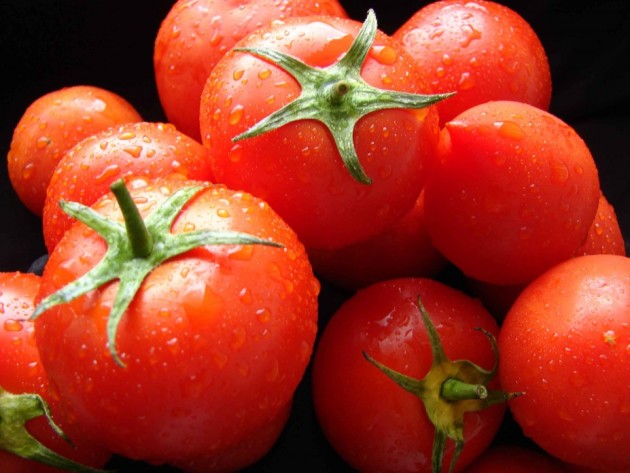
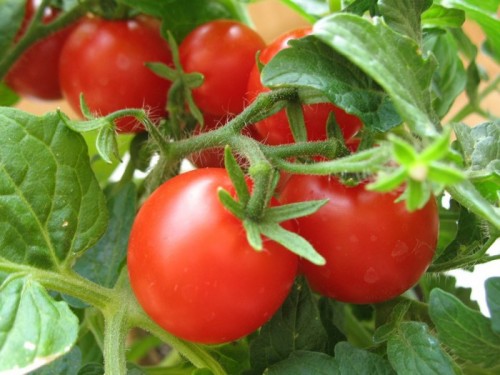
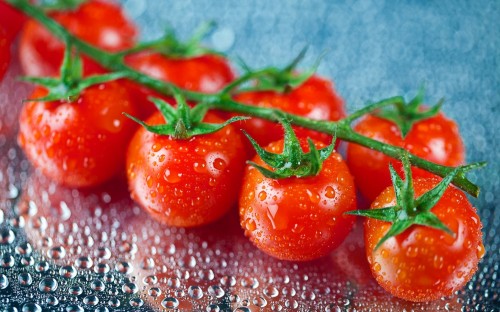
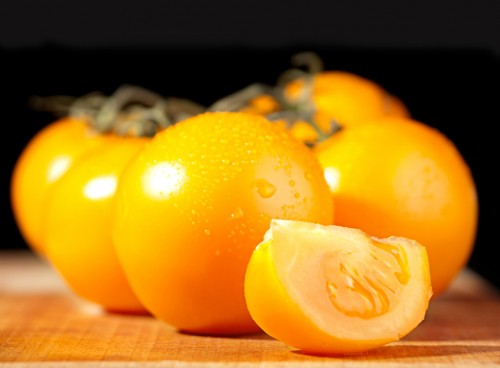
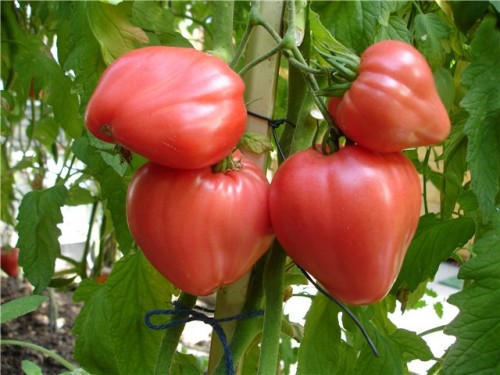
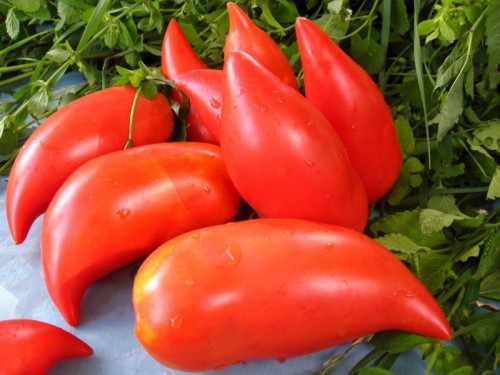




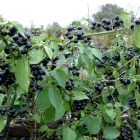
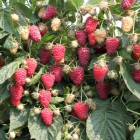
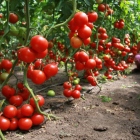
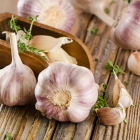
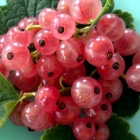
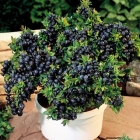
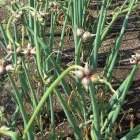
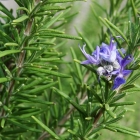
 Start a discussion ...
Start a discussion ...